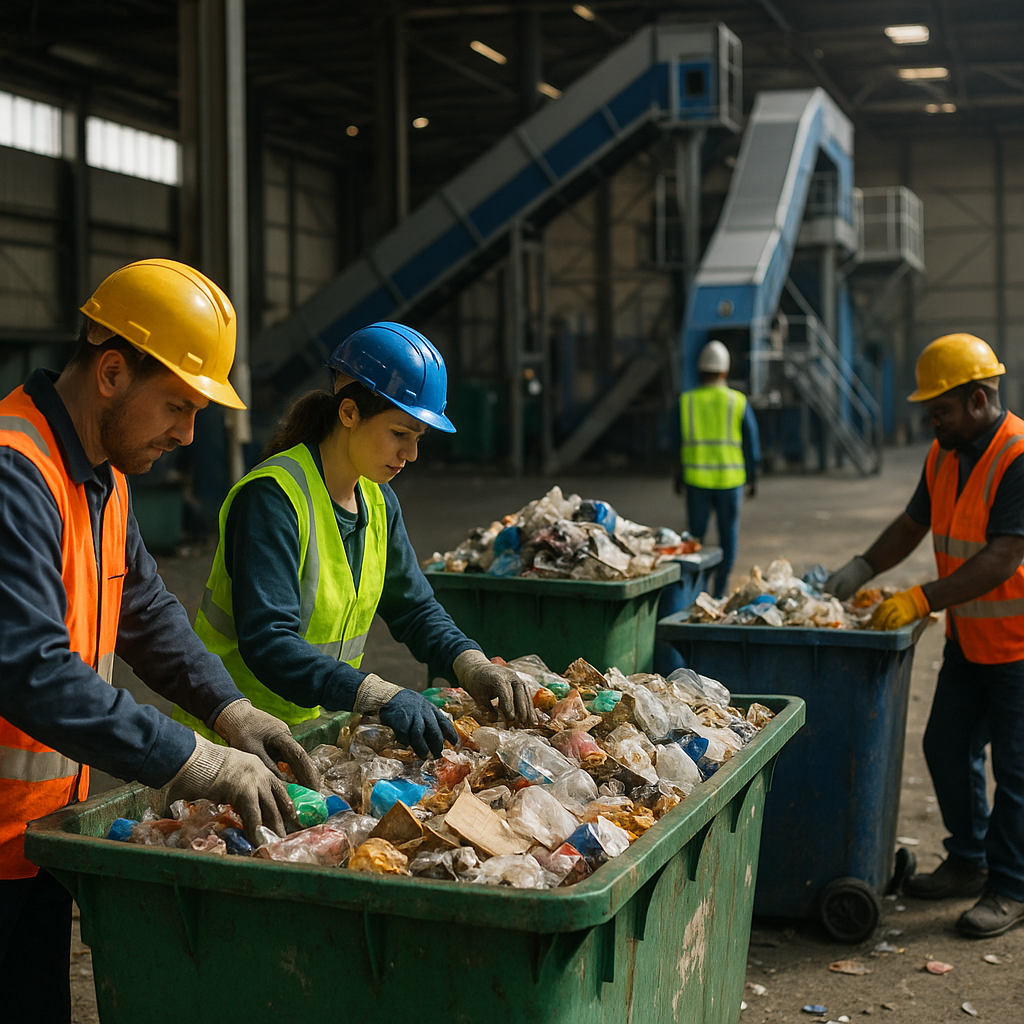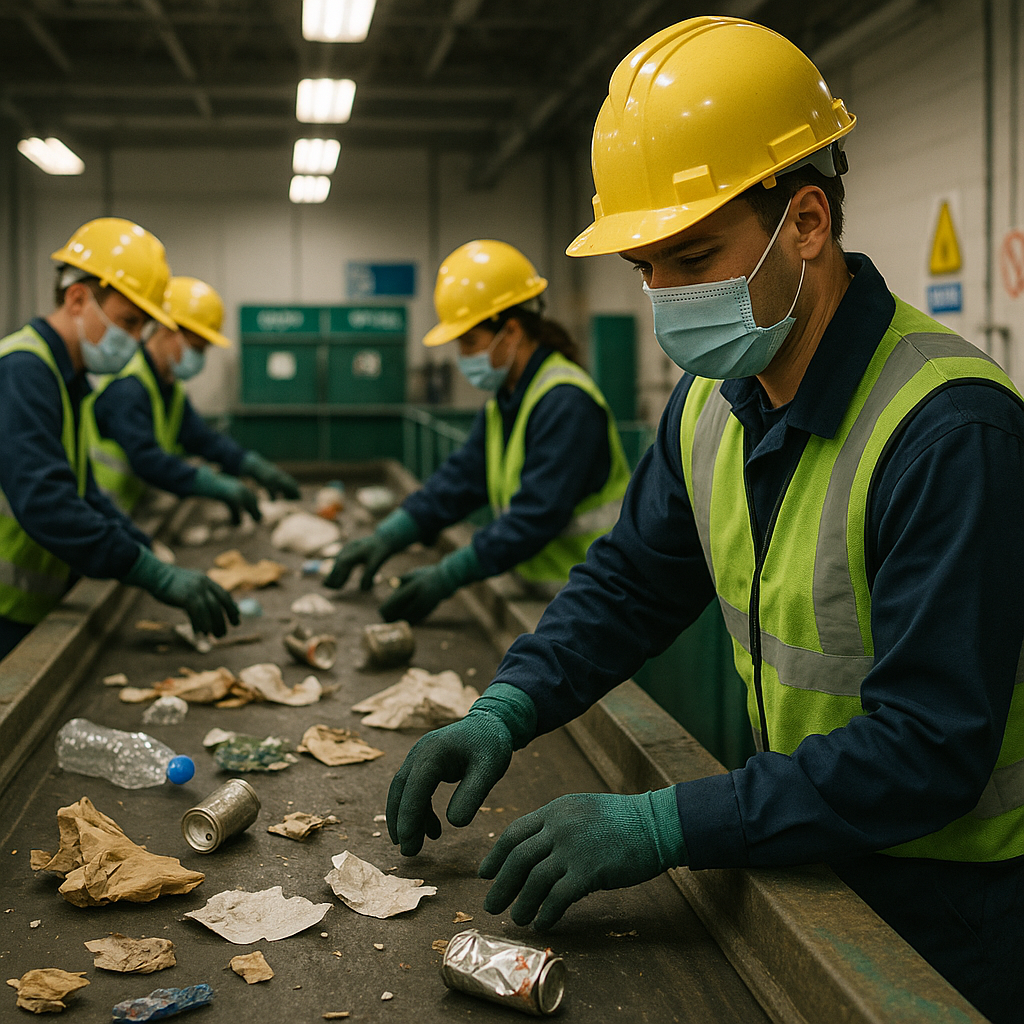5901 Botham Jean Blvd, Dallas, TX 75215
What Are Recyclable Materials? Types, Benefits, and How Recycling Works
August 31, 2025Every day, we discard items that could have a second life. Recyclable materials are items that can be collected, processed, and turned into new products instead of being thrown away. These materials include common household items like newspapers, cardboard boxes, empty soda cans, and plastic water bottles.
Paper and cardboard constitute a significant portion of recyclable waste. They can be repulped and transformed into new paper products without requiring additional tree harvesting. Glass containers can be melted down and reshaped repeatedly without losing quality or purity, making them infinitely recyclable.
Metals like aluminum and steel are particularly valuable in the recycling process. An aluminum can could be recycled and back on store shelves in just 60 days. Plastic, while more complex to recycle due to its different types, still offers substantial environmental benefits when properly processed instead of ending up in landfills or oceans.
Environmental and Economic Benefits of Recycling
Recycling goes beyond reducing landfill waste, offering significant environmental and economic benefits. Environmentally, recycling reduces greenhouse gas emissions by minimizing energy-intensive manufacturing processes. For instance, recycling aluminum can save up to 95% of the energy needed to produce new aluminum from raw ore, thus directly lowering carbon emissions. Likewise, recycling paper helps conserve forests and decreases the energy and water consumed in traditional paper production.
On the economic front, recycling supports job creation and fosters innovation. According to the U.S. Environmental Protection Agency (EPA), the recycling and reuse industry generates over 750,000 jobs and $36 billion in wages annually. By converting waste into raw materials, recycling creates business opportunities in manufacturing, logistics, and product design. Communities also gain when landfill use decreases, reducing waste management costs and extending the lifespan of existing disposal sites.
When individuals and businesses actively engage in recycling, they contribute to a system that supports both environmental sustainability and economic growth. Recycling, therefore, offers a mutually beneficial solution for the planet and local economies.
Challenges and Future of Recycling

While recycling offers clear benefits, the system faces several challenges that impact its efficiency. Contamination is a significant issue; food waste, plastic bags, and non-recyclable items often find their way into recycling bins, reducing the quality of recovered materials and increasing processing costs. Market fluctuations also affect the value of recyclable commodities, straining municipal recycling budgets.
Plastics pose an additional challenge. Due to seven different resin codes and numerous variations, not all plastics are recyclable. Mixed plastic streams are difficult to process and often end up incinerated or in landfills despite collection efforts. Glass recycling can be problematic in areas where collection costs exceed market demand.
The future of recycling, however, looks hopeful. Technological advancements like AI-powered sorting robots, chemical recycling for plastics, and blockchain-based tracking of material streams are enhancing efficiency and transparency. Policy changes, such as extended producer responsibility (EPR) laws, encourage manufacturers to design products with recyclability in mind. Consumer awareness campaigns also play a crucial role in reducing contamination and increasing participation rates.
As communities and businesses adopt new technologies and policies, the recycling industry will continue to develop. Collaboration is key: households must recycle properly, manufacturers need to design sustainable products, and governments should support infrastructure that makes large-scale recycling practical and profitable.
How Are Recyclable Materials Processed?

After collection, recyclable materials are taken to Materials Recovery Facilities (MRFs), where they are transformed from jumbled recyclables into marketable commodities. At these facilities, trucks unload materials onto a tipping floor to start the sorting process. Workers remove obvious contaminants before the materials progress along conveyor belts through mechanical sorting systems.
MRFs use multiple technologies in the separation process. Screens and rotating drums categorize materials by size, while powerful magnets extract steel cans and other ferrous metals. Eddy current separators use magnetic fields to direct aluminum cans into collection bins. Optical sorters with near-infrared lasers identify and classify various plastic types. Human sorters assist by removing contaminants the machines miss.
Once sorted, each material follows its own processing route:
- Paper: Sorted paper and cardboard are compressed into dense bales and sent to paper mills. There, the material is pulped in vats of water and chemicals, breaking down the fibers. Contaminants are filtered out, and the clean pulp is spread on screens, pressed, and dried to form new paper products.
- Plastics: Once separated by type, plastics are washed, shredded, and melted. The molten plastic is then shaped into pellets for manufacturers, who use them as raw material for new plastic products. Different plastic types (PET, HDPE, etc.) are recycled separately since they cannot be mixed.
- Glass: Collected glass is crushed into cullet, which is cleaned of paper labels, caps, and other debris. The clean cullet is melted in furnaces and molded into new glass containers.
- Metals: Aluminum and steel are sent to foundries for melting in large furnaces. The liquid metal is poured into molds or formed into ingots, ready to be reshaped into new products. Metal can be recycled endlessly without quality loss.
The quality of sorted materials significantly affects their market value. Contamination, such as food residue and non-recyclable items, can lower material quality or render entire batches unusable. Clean, well-sorted materials fetch higher prices and are more likely to complete the recycling loop.
After processing, reclaimed materials become valuable feedstock for manufacturing, reducing dependence on virgin resources. A plastic bottle might transform into a fleece jacket, aluminum cans could become a new bicycle, and yesterday’s newspaper might return as a cereal box on your breakfast table.
MRFs’ efficiency depends on technology levels and the quality of incoming materials. Modern facilities use AI-powered robots and advanced optical sorting systems to enhance recovery rates. Despite these technological advances, the most effective recycling begins with proper sorting at home and work.
Conclusion: The Importance of Recycling Materials

Recycling is a powerful tool for environmental conservation and sustainability. It transforms what would otherwise be landfill waste into valuable resources, creating a closed-loop system that benefits our planet in various ways. By diverting materials from landfills, we reduce methane emissions and prevent soil and groundwater contamination from toxic leachate.
Environmental benefits extend beyond waste reduction. Recycling conserves natural resources by decreasing the demand for raw materials, which helps protect habitats, preserve biodiversity, and sustain healthy ecosystems. For example, recycling a ton of paper saves approximately 17 trees, while recycling aluminum uses 95% less energy than producing it from raw materials.
For your recycling needs, contact Okon Recycling at 214-717-4083. Our team of experts can help you implement effective recycling programs that maximize environmental benefits while meeting your specific requirements.
